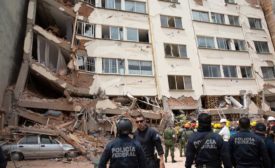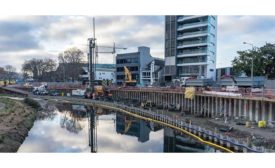Home » earthquake
Articles Tagged with ''earthquake''
Natural Disasters
Experts are probing structural design, construction practice and building materials
Read More
Earthquake Researchers Set to Investigate Mexico City Construction Performance
Engineers eager to analyze must stand back until the search-and-rescue phase ends
Read More
Construction Team Treads Lightly Around Moscone Convention-Goers
Un-conventional approaches were needed to keep San Francisco facility operating
Read More
The latest news and information
#1 Source for Construction News, Data, Rankings, Analysis, and Commentary
JOIN ENR UNLIMITEDCopyright ©2024. All Rights Reserved BNP Media.
Design, CMS, Hosting & Web Development :: ePublishing












